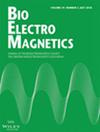Haoran Yu, Wendan Cheng, Chengbiao Ding, Ziyu Li, Wenchong Ouyang, Qi Liu, Zhengwei Wu, Juehua Jing
求助PDF
{"title":"A Meaningful Attempt: Applying Dielectric Barrier Discharge Plasma to Induce Polarization of Macrophages","authors":"Haoran Yu, Wendan Cheng, Chengbiao Ding, Ziyu Li, Wenchong Ouyang, Qi Liu, Zhengwei Wu, Juehua Jing","doi":"10.1002/bem.22446","DOIUrl":null,"url":null,"abstract":"<p>Macrophage polarization plays an important role in many macrophage-related diseases. This study was designed to preliminarily explore the effects of dielectric barrier discharge (DBD) plasma on the polarization direction and cell activity of macrophages with different phenotypes (ie, M0, M1, and M2). The M1 macrophage marker inducible nitric oxide synthase (iNOS) and M2 macrophage marker cluster of differentiation 206 (CD206) were detected by western blot (WB). The effects of DBD plasma on macrophage viability were analyzed by using a cell counting kit-8 detection kit. M0, M1, and M2 macrophages exhibited a decrease in iNOS expression and an increase in CD206 expression after the DBD plasma intervention. Additionally, the decrease in macrophage viability remained non-significant after initiating the intervention. DBD plasma can promote the transformation of M0 and M1 macrophages to M2 macrophages, and can further enhance the expression of the M2 macrophage phenotype marker CD206. Our study not only demonstrates the potential therapeutic value of DBD plasma for macrophage-related diseases, but it also provides a new direction for research to improve the treatment of macrophage-related diseases. © 2023 Bioelectromagnetics Society.</p>","PeriodicalId":8956,"journal":{"name":"Bioelectromagnetics","volume":"44 5-6","pages":"107-118"},"PeriodicalIF":1.2000,"publicationDate":"2023-04-27","publicationTypes":"Journal Article","fieldsOfStudy":null,"isOpenAccess":false,"openAccessPdf":"","citationCount":"0","resultStr":null,"platform":"Semanticscholar","paperid":null,"PeriodicalName":"Bioelectromagnetics","FirstCategoryId":"99","ListUrlMain":"https://onlinelibrary.wiley.com/doi/10.1002/bem.22446","RegionNum":3,"RegionCategory":"生物学","ArticlePicture":[],"TitleCN":null,"AbstractTextCN":null,"PMCID":null,"EPubDate":"","PubModel":"","JCR":"Q3","JCRName":"BIOLOGY","Score":null,"Total":0}
引用次数: 0
引用
批量引用
Abstract
Macrophage polarization plays an important role in many macrophage-related diseases. This study was designed to preliminarily explore the effects of dielectric barrier discharge (DBD) plasma on the polarization direction and cell activity of macrophages with different phenotypes (ie, M0, M1, and M2). The M1 macrophage marker inducible nitric oxide synthase (iNOS) and M2 macrophage marker cluster of differentiation 206 (CD206) were detected by western blot (WB). The effects of DBD plasma on macrophage viability were analyzed by using a cell counting kit-8 detection kit. M0, M1, and M2 macrophages exhibited a decrease in iNOS expression and an increase in CD206 expression after the DBD plasma intervention. Additionally, the decrease in macrophage viability remained non-significant after initiating the intervention. DBD plasma can promote the transformation of M0 and M1 macrophages to M2 macrophages, and can further enhance the expression of the M2 macrophage phenotype marker CD206. Our study not only demonstrates the potential therapeutic value of DBD plasma for macrophage-related diseases, but it also provides a new direction for research to improve the treatment of macrophage-related diseases. © 2023 Bioelectromagnetics Society.
介质阻挡放电等离子体诱导巨噬细胞极化的一次有意义的尝试
巨噬细胞极化在许多巨噬细胞相关疾病中起重要作用。本研究旨在初步探讨介质阻挡放电(DBD)等离子体对不同表型巨噬细胞(即M0、M1和M2)极化方向和细胞活性的影响。western blot检测M1巨噬细胞标记物诱导型一氧化氮合酶(iNOS)和M2巨噬细胞标记物分化簇206 (CD206)。采用细胞计数试剂盒-8检测试剂盒分析DBD血浆对巨噬细胞活力的影响。M0、M1、M2巨噬细胞在DBD血浆干预后iNOS表达降低,CD206表达升高。此外,干预开始后,巨噬细胞活力的下降仍然不显著。DBD血浆可促进M0、M1巨噬细胞向M2巨噬细胞转化,并可进一步增强M2巨噬细胞表型标志物CD206的表达。我们的研究不仅证明了DBD血浆对巨噬细胞相关疾病的潜在治疗价值,也为提高巨噬细胞相关疾病的治疗提供了新的研究方向。©2023生物电磁学学会。
本文章由计算机程序翻译,如有差异,请以英文原文为准。

 求助内容:
求助内容: 应助结果提醒方式:
应助结果提醒方式:


